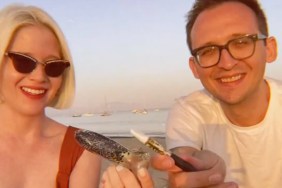Photo: Courtesy of Mediakix.
Earlier this month, Mediakix announced the results of an experiment they constructed to expose the fake Instagram influencer phenomenon by creating to phony IG accounts: a lifestyle and fashion model (@calibeachgirl310) and a travel and adventure photographer (@wanderingggirl).
Also: Diet Prada Puts Fashion Knock-offs on Blast on Instagram
Their study showed how it is possible to spend $300 or less in order to tap into the $1 billion Instagram influencer market. IG influencers are the latest marketing craze, whereby various individuals secure sponsorship deals with brands in order to showcase their products and services to their flowers.

Courtesy of Mediakix.
Mediakix outlines how easy it is to create fake IG Influencers in their step-by-step guide to tricking the system at its own game. “Step 1: Generate Content (or Source Content),” they advise, showing how it is possible to source free stock photographs and construct a phony persona without ever spending a dime.
By consistently using the same stock photo model, who they names “Alexa Rae,” Mediakix tapped into obsession with young blondes in order to create @calibeachgirl310, amassing 51.3K followers with just 73 posts as of today.

Courtesy of Mediakix.
The same goes for “Amanda Smith” aka @wanderggirl, who has secured 31.5K followers with just 46 posts as of this writing. Here, Mediakik deftly combined free stock photos of blonde models along with gorgeous travel photography taken everywhere from waters off Hawaii to the shores of Italy.
You may wonder, how did they get so popular in such a story time? “Step 2: Purchase Fake Followers,” Mediakix advises. After assembling content they went on to buy 1,000 followers per day as they didn’t want to trigger any IG alarms. They soon realized that they could fly under the radar purchasing up to 15,000 followers a pop. The site explains, “ The pricing for followers ranged from $3-8 per 1,000 followers, depending on the reliability of the service.”
Step 3, the final move for any sincere phony, is to purchase fake engagement, which costs between $4-9 per 1,000 likes, according to the site. The more you spend, the quicker the results. As the follower count increased, Mediakix scaled up their engagement to reflect “natural” growth, and then took it offline, where they began negotiating brand sponsorship deals.
“Many influencer marketing platforms require a minimum number of followers in order to sign up for and partake in brand deals. For this reason, we weren’t able to register for certain influencer marketing platforms until each account had 10,000 followers. Once we hit this threshold, we were able to sign the accounts up for a wide range of platforms,” Mediakix explained. “Once we had the accounts on a few platforms, we applied for new campaigns daily. The application process ranged from simply clicking a button to writing a short message to the brand, depending on the platform’s requirements.”
From these efforts, they secured two paid brand deals for each of the accounts, including partnerships with swimsuit, alcohol, and food/beverage companies that included monetary compensation, free product, or both.
Mediakix indicates that the Instagram influencer market is expected to hit $2 billion by 2019, making it a very lucrative area for all kids of business savvy, be it ethical or otherwise, reminding people on all sides of the divide: buyer beware.
Miss Rosen is a journalist covering art, photography, culture, and books. Her byline has appeared in L’Uomo Vogue, Vogue Online, The Undefeated, Dazed Digital, Aperture Online, and Feature Shoot. Follow her on Twitter @Miss_Rosen.








